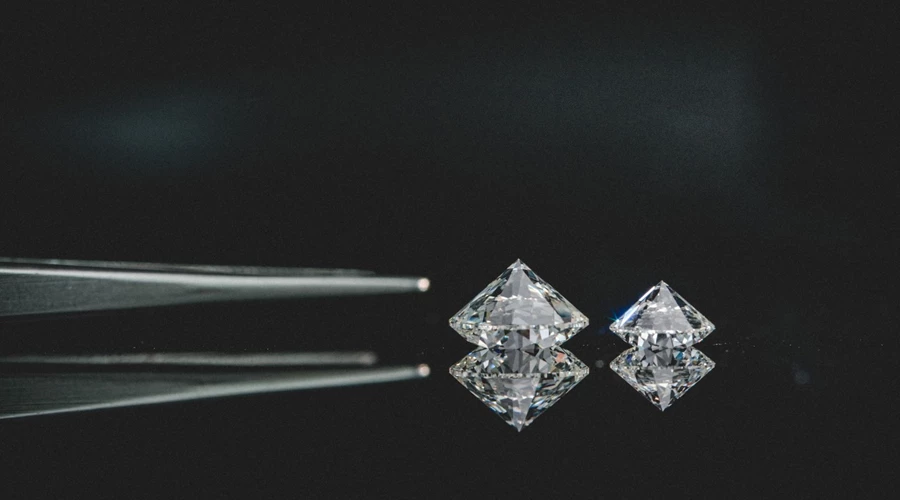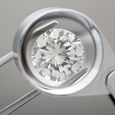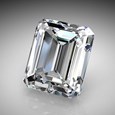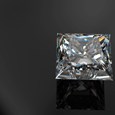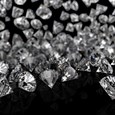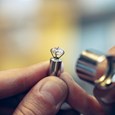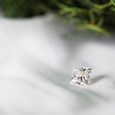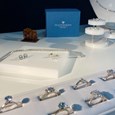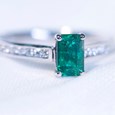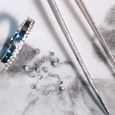Sign up for our Newsletter
Culets 101
February 24 2023
You've chosen your ideal diamond shape, selected the best cut, and picked a carat weight that’s just right. After searching for your dream diamond on-line, you've found two that fit the bill perfectly.
Seemingly alike in every way – price, table size, even girdle width, these two diamonds do have one small difference: one has a culet and one doesn't. Which should you buy?
If you don’t know, read on. You might find it an education.
Lesson 1: What a Culet is – and What It is Not
Picture a diamond (or, if you’re lucky enough to have one in your pocket, hold it in front of you). The culet is found at the pointiest tip of the stone, right at the bottom. In fact, ‘culet’ comes from culus, which is the Latin word for bottom (stop sniggering!).
However, the culet isn’t the pointy tip itself. Rather, it’s the tiny facet (flat surface) that’s made by cutting the tip off.
To make it slightly easier to imagine, see the image below.
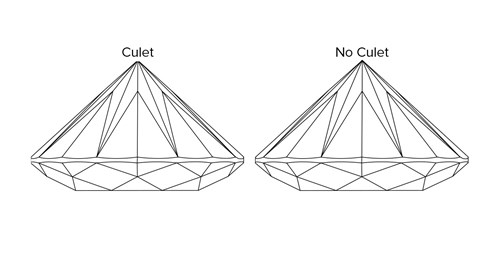
Lesson 2: How to Pronounce ‘Culet’ Without Embarrassing Yourself
Some people swear it should be pronounced q-lett or q-litt (favoured by most dictionaries) while others would stake their life on koo-lay. It doesn't really matter as long as you don’t say cull-it or worse, cutlet (it has been known…)
Suffice it to say, should you find yourself in a roomful of gemmology buffs, your best bet is to not pronounce it at all before someone else does.
Lesson 3: What a Culet is For a.k.a. What’s the Point?
Having a sharp point on a diamond makes the stone vulnerable to chipping or breaking (just ask the Princess Cut, which has four). Thanks to some very technical stuff to do with crystallographic structural planes, even a small knock to the tip of a diamond could cause the entire bottom half to split.
Cutting the sharp point off prevents this kind of devastating damage. So the culet - the tiny little facet tucked away at the bottom of the diamond where no one can see it – is actually a gemmological hero. Hurray for culets!
Lesson 4: Grading a Culet
GIA diamond certificates are made up of multiple factors that grade a diamond - the culet is just one of several factors that contribute to a diamond’s cut grade.
Below is the International Diamond Grading System that GIA uses, with diagrams.
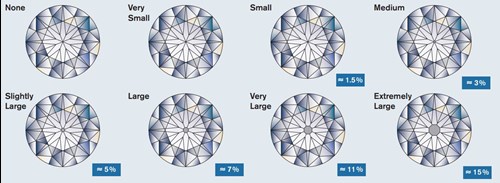
*Diagram is taken from GIA Booklet*
Although we don’t have a filter for Culet Grade on our website, we wouldn’t recommend anything above small - though it’s highly unlikely you’ll find one (a 0.05% chance to be exact).
Lesson 5: Why Some Diamonds Have a Culet and Some Do Not
Some of you bright young sparks may now be thinking, “If a culet is such a good thing, why don’t all diamonds have one?”
That’s a very good question and one that can be answered with a small demonstration. First, take a cup and drill a hole in the bottom. Second, pour water into it.
This experiment makes two things immediately clear.
- Drilling a hole in a cup makes water fall out of the bottom.
- You really shouldn't blindly follow instructions you find on the internet. Now you have a useless cup.
Of course, there is a point to all this. With diamonds, cutting a facet directly opposite and parallel to the table (the top surface) can create a window effect. This means some of the light entering the stone at the top will escape out the bottom without having to do any of that lovely bouncy refracting diamonds are famous for. Hence a culet can reduce sparkle.
A culet can also spoil a diamond’s appearance. If the culet is too big, you might be able to see it through the top of the diamond as a dark spot. Which is not culet at all.
Lesson 6: To Culet or Not to Culet, That is the Question
Or, to put it another way, are culets a Good Thing or a Bad Thing? All things being equal, should you choose a diamond WITH a culet over a diamond without one?
In spite of everything, I said in Lesson 3, not having a culet doesn't mean your diamond will shatter into a thousand tiny pieces at the drop of a hat. A culet mainly protects the diamond during the cutting and polishing process – the tip is fairly well protected anyway after it’s placed in a setting. If your chosen diamond doesn't have a culet, that’s perfectly fine.
Similarly, having a culet doesn't mean your diamond will have a big light-sucking black hole in the middle of it. Hopefully, if you've been paying attention in class, you’ll have put two and two together and realized that when it comes to culets, it’s the size that counts. Very simply, if your chosen diamond has a culet, make sure it’s a small one.
In conclusion:
- No culet = good
- Small culet = good
- Big culet = bad
Class dismissed!
Read more on Diamond Knowledge
If you wish to learn more about our Bespoke services, click here.
If you wish to contact us, click here.
Find us on Instagram @QualityDiamonds
-
Ethically Sourced Diamonds
-
Handmade in the UK
-
FREE Shipping Worldwide
-
60 Day Returns

